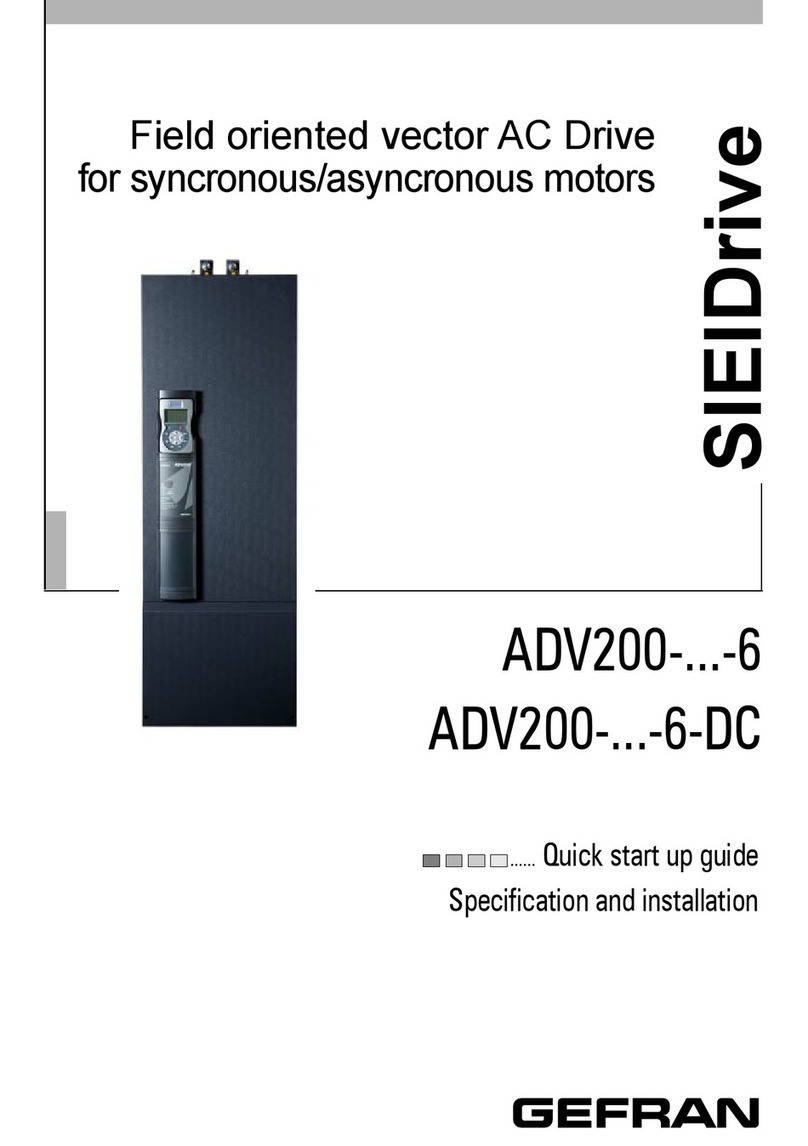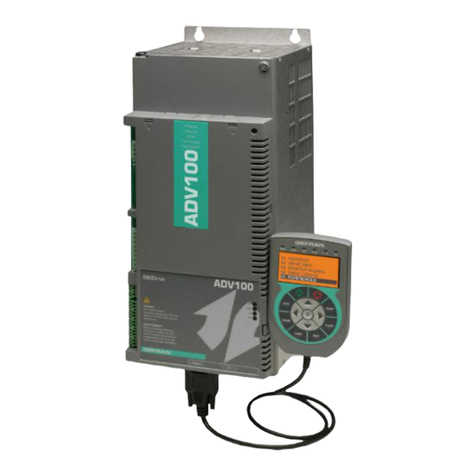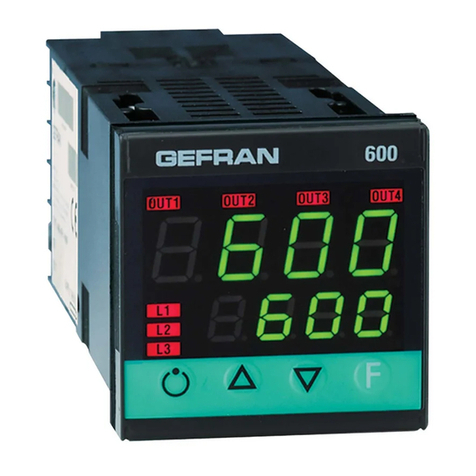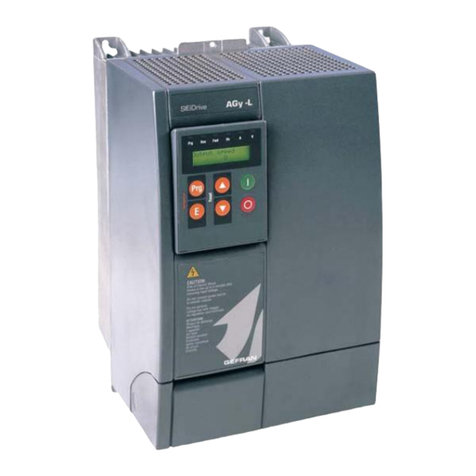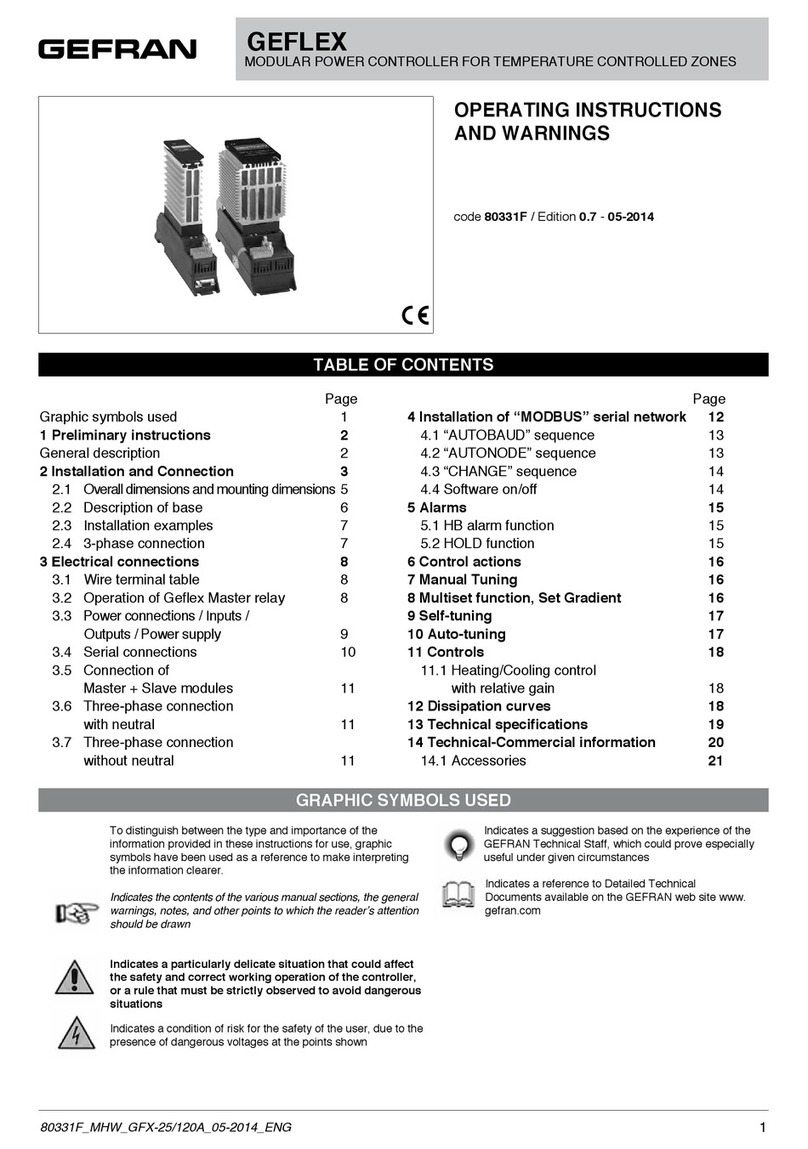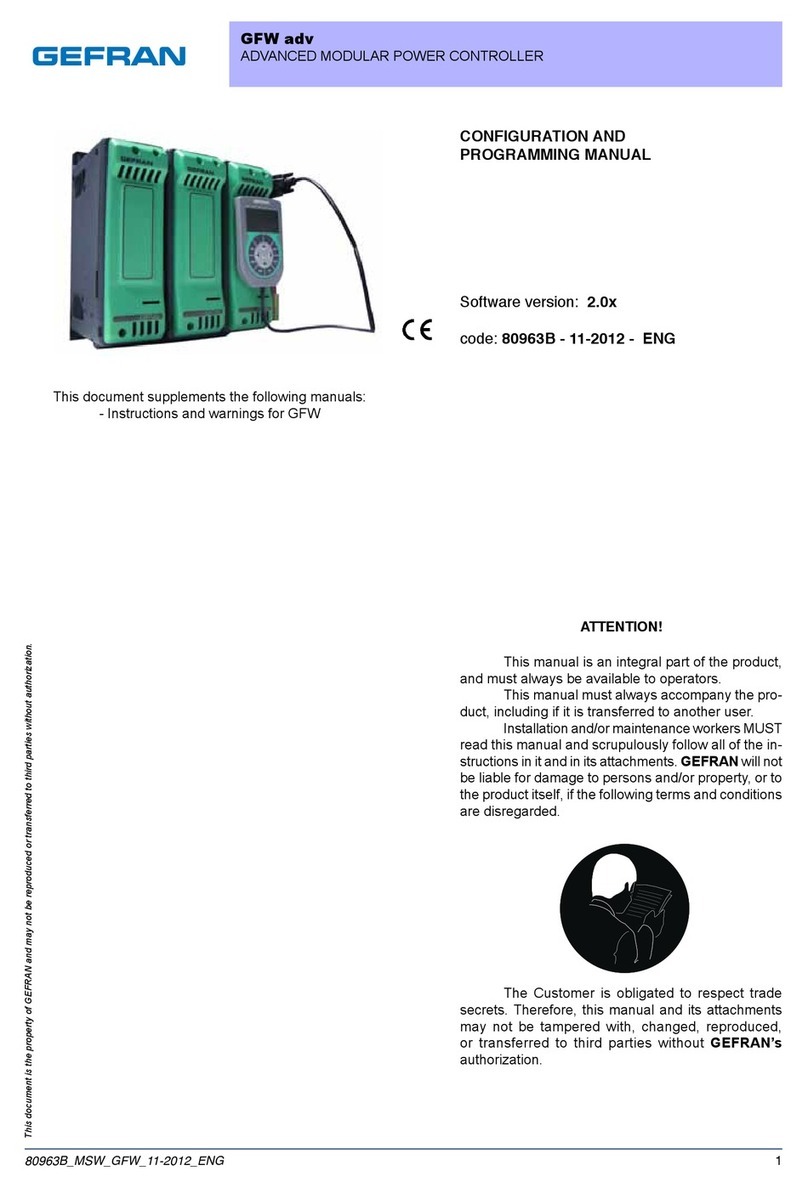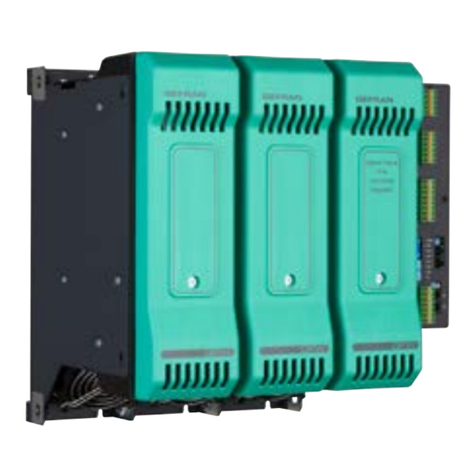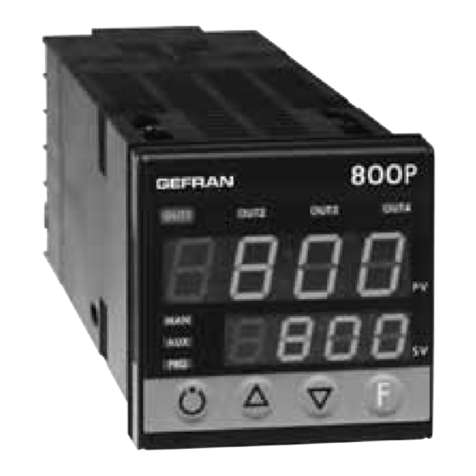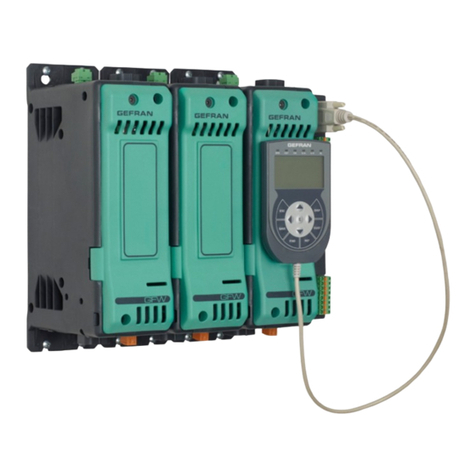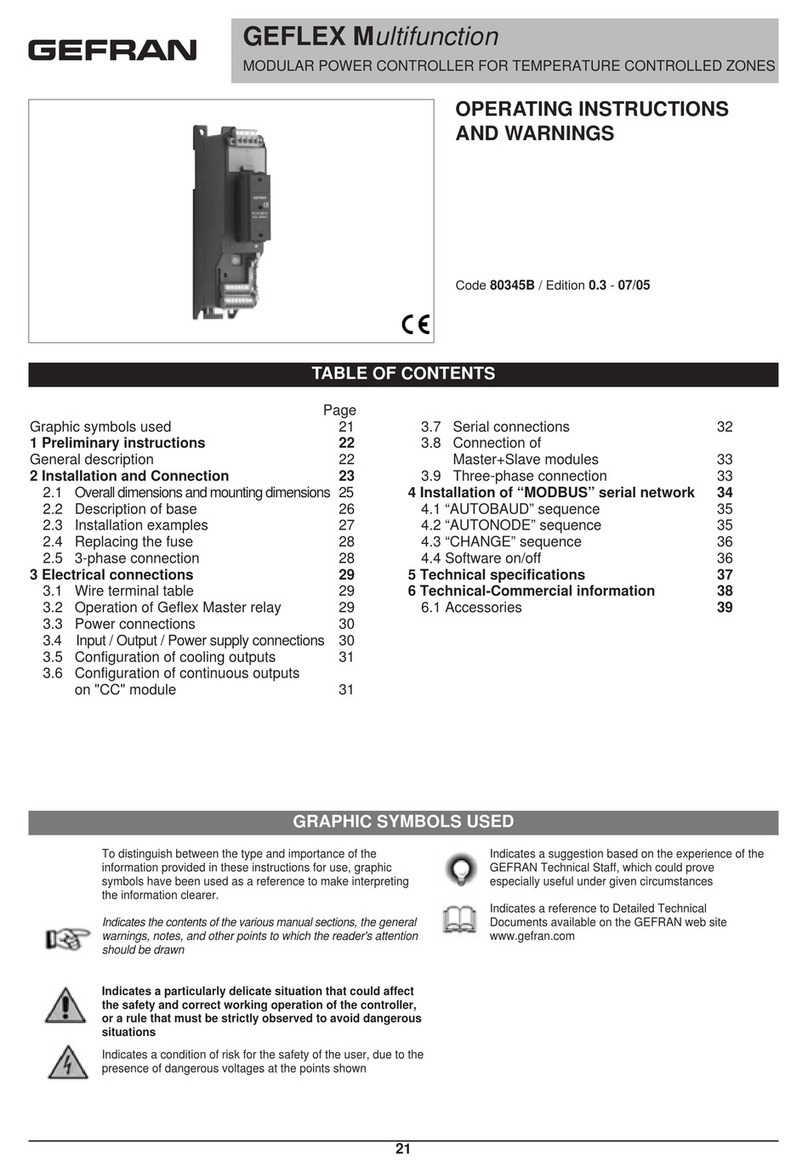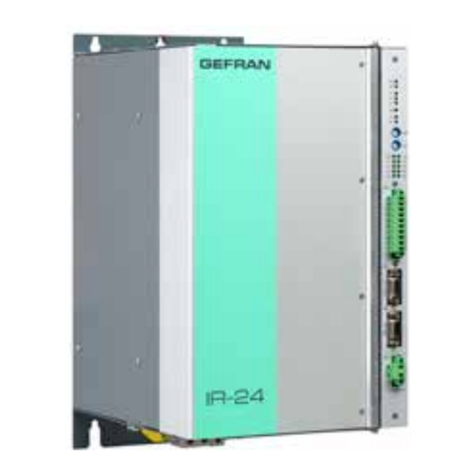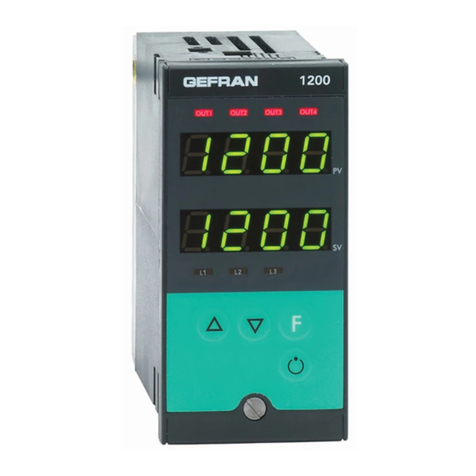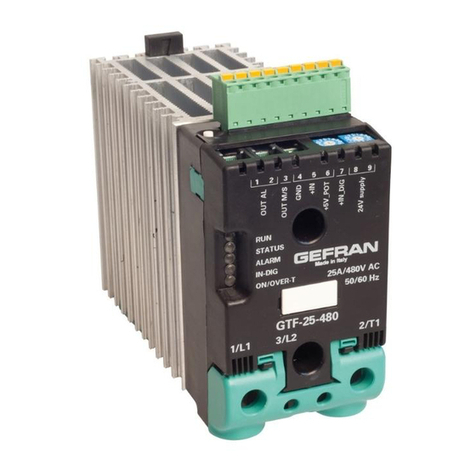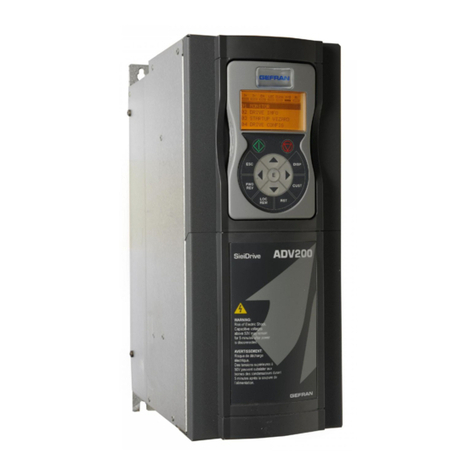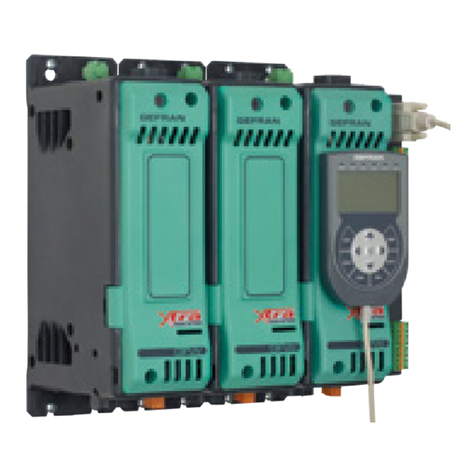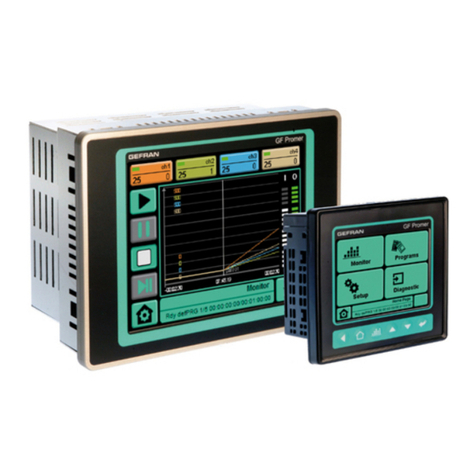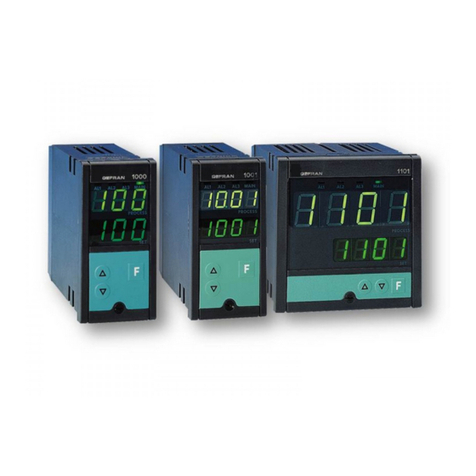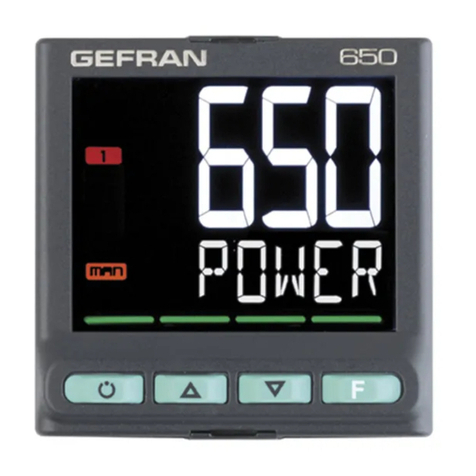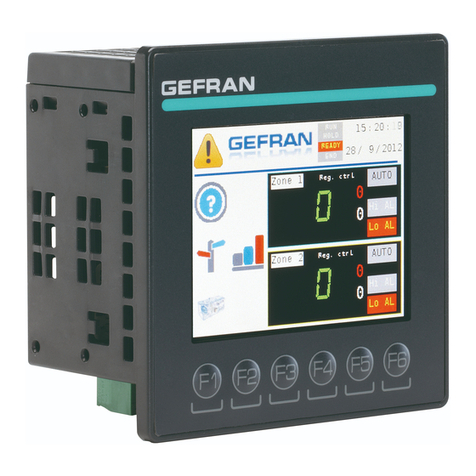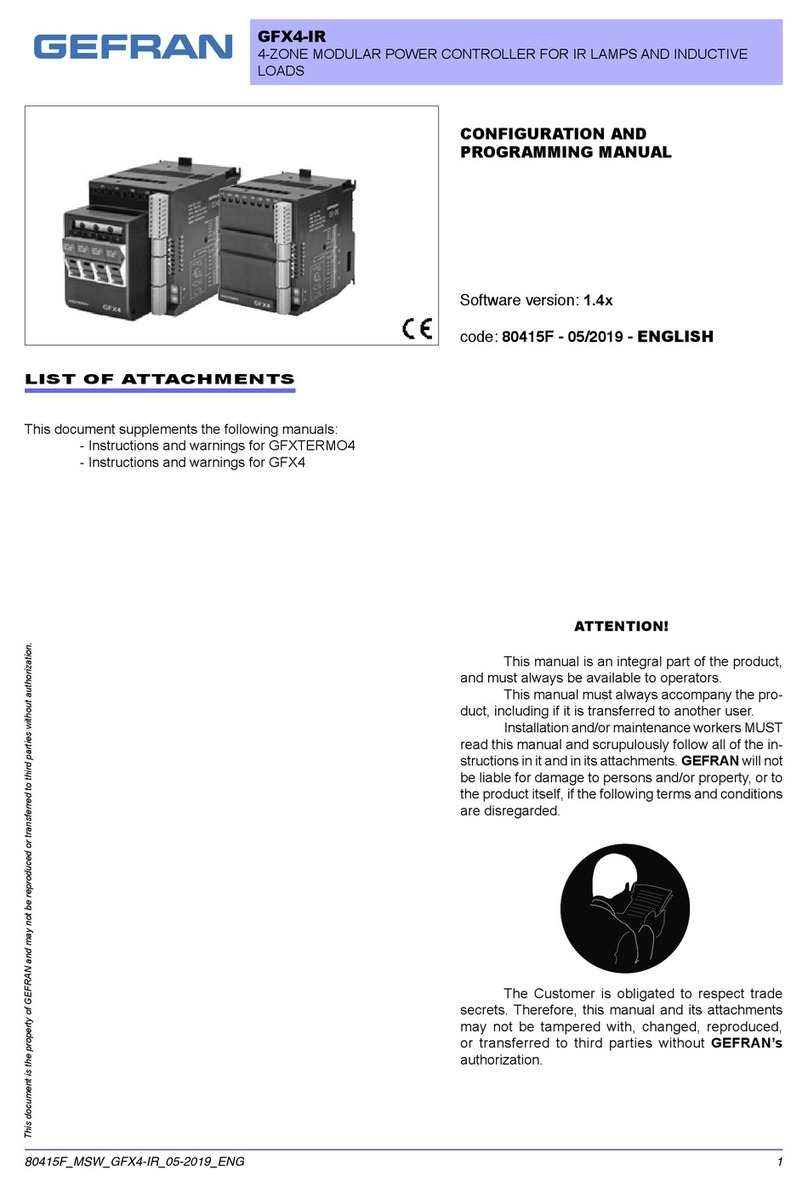2
4.6.13. ENBL.1 - Consent 1 to execute step .........................59
4.6.14. ENBL.2 - Consent 2 to execute step .........................59
4.6.15. ENBL.3 - Consent 3 to execute step .........................60
4.6.16. ENBL.4 - Consent 4 to execute step .........................60
4.6.17. EVN.R.1 - Event 1 during step ramp..........................60
4.6.18. EVN.R.2 - Event 2 during step ramp..........................60
4.6.19. EVN.R.3 - Event 3 during step ramp..........................60
4.6.20. EVN.R.4 - Event 3 during step ramp..........................61
4.6.21. EVN.H.1 - Event 1 during step hold ...........................61
4.6.22. EVN.H.2 - Event 2 during step hold ...........................61
4.6.23. EVN.H.3 - Event 3 during step hold ...........................61
4.6.24. EVN.H.4 - Event 4 during step hold ...........................61
4.6.25. GROP.R - Group of parameters assigned to ramp ....62
4.6.26. GROP.H - Group of parameters assigned to hold .....62
4.6.27. MSG.R - Message associated with the ramp ............62
4.6.28. MSG.H - Message associated with the maintenance62
4.7. I.MAIN Submenu - Configuration of main input...................63
4.7.1. tyPE - Selecting sensor type......................................64
4.7.2. Lin - Selecting linearization type................................65
4.7.3. Unit - Selecting the displayed unit of measurement..66
4.7.4. FILT - Digital filter .......................................................66
4.7.5. FILT.D - Digital filter on PV display.............................66
4.7.6. DEC.P - Number of decimals displayed ....................66
4.7.7. LO.SCL - Lower limit of scale ....................................67
4.7.8. HI.SCL - Upper limit of scale .....................................67
4.7.9. OF.SCL - Scale offset correction ...............................68
4.7.10. LO.SP - Lower limit for setpoint.................................68
4.7.11. HI.SP - Upper limit for setpoint..................................68
4.7.12. LO.AL - Lower limit for alarms ...................................68
4.7.13. HI.AL - Upper limit for alarms ....................................68
4.8. I.SPR Submenu - Configuration of remote setpoint input ...69
4.8.1. t.SPr - Selecting type of remote setpoint input .........70
4.8.2. F.SPr - Selecting remote setpoint input function .......70
4.8.3. Lin.S - Selecting linearization type ............................70
4.8.4. FILT.S - Filtro digitale..................................................70
4.8.5. LO.SPR - Minimum scale limit ...................................71
4.8.6. HI.SPR - Maximum scale limit ...................................71
4.8.7. OF.SPR - Scale offset correction ...............................71
4.9. I.CT1 Submenu - Configuration of current transformer CT172
4.9.1. FILT.1 - Digital filter ....................................................73
4.9.2. HI.CT1 - Maximum scale limit....................................73
4.9.3. OF.CT1 - Scale offset correction................................73
4.10. I.CT2 Submenu - Configuration of current transformer CT2 ..
74
4.10.1. FILT.2 - Digital filter ....................................................75
4.10.2. HI.CT2 - Maximum scale limit....................................75
4.10.3. OF.CT2 - Scale offset correction................................75
4.11. ALARM Submenu - Configuration of alarms........................76
4.11.1. ALARM - Selecting the alarm to be configured .........77
4.11.2. rEF.x - Selecting the alarm reference .........................77
4.11.3. d.i.x - Selecting direct or inverse alarm .....................77
4.11.4. A.r.x - Selecting absolute or deviation alarm .............77
4.11.5. n.S.x - Method for applying hysteresis ......................78
4.11.6. PWON.E - Disabling the alarm at power-on ..............78
4.11.7. LATCH - Memorizing the alarm..................................78
4.11.8. HYSTE - Hysteresis....................................................79
4.11.9. DELAY - Alarm trip delay ...........................................79
4.11.10. MSG.AL - Message associated with tripping of alarm ..
79
4.11.11. BLK.AL - Flashing of PV display ................................79
4.12. AL.HB Submenu – Configuring the Heater Break alarm ......80
4.12.1. LOW.ON - Alarm due to insufficient current draw .....81
4.12.2. HIG.ON - Alarm due to excessive current draw ........81
4.12.3. HI.OFF - Alarm due to excessive current draw..........81
4.12.4. TIME - HB alarm trip delay.........................................81
4.12.5. THR.PE - Percentage of HB current compared to
calibration ..................................................................82
4.12.6. OUT - Control output associated with HB alarm .......82
4.12.7. LoAd - Selecting type of connected load ..................82
4.12.8. MSG.HB - Message associated with tripping of HB
alarm ..........................................................................82
4.12.9. BLK.HB - Flashing of PV display ...............................83
4.13. PID Submenu – Configuring control parameters .................84
4.13.1. S.TUNE - Enabling Self-Tuning ..................................85
4.13.2. SOFT.S - Enabling Soft-Start .....................................85
4.13.3. SOFT.T - Soft-Start Time ...........................................85
4.13.4. A.TUNE - Enabling Auto-Tuning.................................85
4.13.5. Aut.t - Selecting type of Auto-Tuning.........................86
4.13.6. Cntr - Selecting type of control..................................86
4.13.7. DERV.S - Derivative sampling time ............................86
4.13.8. H.PB - Proportional heating band or hysteresis in ON-
OFF control ................................................................87
4.13.9. H.IT - Integral heating time ........................................87
4.13.10. H.DT - Derivative heating time...................................87
4.13.11. H.P.HI - Maximum limit of heating power ..................87
4.13.12. H.P.LO - Minimum limit of heating power ..................87
4.13.13. COOL - Selecting cooling fluid ..................................88
4.13.14. C.SP - Cooling setpoint with respect to heating
setpoint ......................................................................88
4.13.15. C.PB - Proportional cooling band or hysteresis in ON-
OFF control ................................................................88
4.13.16. C.IT - Integral cooling time.........................................88
4.13.17. C.DT - Derivative cooling time ...................................88
4.13.18. C.P.HI - Maximum limit of cooling power...................89
4.13.19. C.P.LO - Minimum limit of cooling power ..................89
4.13.20. RESET - Manual reset................................................89
4.13.21. P.RST - Potenza di reset ............................................89
4.13.22. A.RST - Antireset .......................................................89
4.13.23. FEEDF - Feedforward power .....................................90
4.13.24. DEAD.B - Deadband..................................................90
4.13.25. FAULT - Fault action power .......................................90
4.13.26. GRAD.I - Setpoint gradient in increase......................90
4.13.27. GRAD.D - Setpoint gradient in decrease...................90
4.13.28. Unit - Unit of measurement of gradient .....................91
4.13.29. GRAD.O - Gradient of control output ........................91
4.13.30. LBA.TM - Tripping delay ............................................91
4.13.31. LBA.PW - Power delivered when LBA alarm trips.....91
4.14. PID.GR Submenu – Configuring groups of control
parameters ...........................................................................92
4.14.1. PID.G.R - Selecting the parameter group to be confi-
gured.......................................................................... 93
4.14.2. H.PB - Proportional heating band or hysteresis in ON-
OFF control ................................................................93
4.14.3. H.IT - Integral heating time ........................................93
4.14.4. H.DT - Derivative heating time ...................................93
4.14.5. H.P.HI - Maximum heating power ..............................93
4.14.6. H.P.LO - Minimum limit of heating power ..................94
4.14.7. C.PB - Proportional cooling band or hysteresis in ON-
OFF control ................................................................94
4.14.8. C.IT - Integral cooling time.........................................94
4.14.9. C.DT - Derivative cooling time ...................................94
4.14.10. C.P.HI - Maximum limit of cooling power...................94
4.14.11. C.P.LO - Minimum limit of cooling power ..................95
4.14.12. PV.THR - Threshold PV for the activation of the group
of PID parameters......................................................95
4.15. I.DIGT Submenu – Configuring digital inputs.......................96
4.15.1. I.DIG.N - Selecting the digital input ...........................97
4.15.2. S.in.x - Defining the input state..................................97
4.15.3. F.in.x - Selecting the assigned function .....................97
4.15.4. ST.EN.N - Setting assigned consent number ............98
4.15.5. MSG.IN - Selecting the digital input message...........98
4.16. OUTPU Submenu – Configuring outputs............................99
4.16.1. OUT.N - Selecting the output...................................100
4.16.2. S.ou.x - Defining the output state............................100
4.16.3. F.ou.x - Selecting the function assigned to relay, logic
or Triac output..........................................................101
4.16.4. F.ou.C - Selecting the function assigned to continuous
output.......................................................................101
4.16.5. EVNT.N - Setting the event number ........................102
4.16.6. FB.OU.N - Setting the Function Block output number ..
102
4.16.7. IN.DG.N - Setting the digital input number..............102
4.16.8. SWTCH - Setting the number of switchings for signal ..
102
4.16.9. FAULT - State of output with broken input ..............102
4.16.10. MSG.OU - Selecting the output message ...............103
4.16.11. CY.TIM - Cycle time of output..................................103
4.17. OUT.AN - Submenu – Configuring the analog retransmission
CONTENTS
